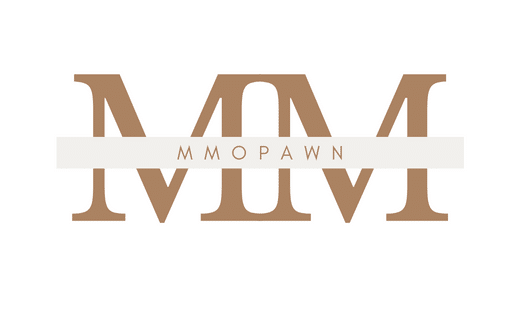In the digital era, the art of storytelling has transformed rapidly. The integration of storytelling and digital content, especially among nonprofit organizations, has created a new approach for engaging audiences and raising funds. As a nonprofit, your duty is to advocate for your cause and inspire people to act. You want to make a significant impact, and telling your charity’s story through digital media is one of the most effective ways to do so. This discussion will explore how UK-based charities can harness the power of digital storytelling for fundraising and campaign marketing.
Understanding Digital Storytelling
Digital storytelling is a technique that combines the age-old art of storytelling with multimedia features such as graphics, audio, and video to present information on digital platforms. This method enables charities to portray their stories in a more compelling manner, enhancing the overall message and call-to-action of their campaigns.
Sujet a lire : How to Build an Engaging Virtual Event Platform for UK Conferences?
Digital storytelling is not only about the format but also the process of creating stories. It involves bringing a story to life, making it relatable and engaging, and connecting it with the audience on an emotional level. This technique helps charities to create a connection with their audience and inspire them to support their cause.
The Power of Digital Storytelling in Fundraising
In the realm of fundraising, digital storytelling plays a pivotal role. By personalizing your story, you can touch the hearts of your donors, prompting them to contribute to your cause. Digital storytelling can help your charity to:
En parallèle : What Are the Latest Trends in Sustainable Packaging for UK Food Startups?
- Convey a strong and compelling message about your cause.
- Create an emotional connection with your audience.
- Highlight the impact of donations.
- Encourage potential donors to take action.
Visuals are more powerful than words. By using images, videos, and graphics, you can show your audience the real impact of their contributions. You can show them how their donations are used, who benefits from them, and how they can change lives. This transparency can build trust with your audience, making them more likely to support your cause.
Harnessing Social Media for Digital Storytelling
Social media is a powerful tool for digital storytelling. It offers an array of platforms where charities can share their stories, engage with their audience, and solicit donations. Whether it’s Facebook, Instagram, Twitter, or LinkedIn, each social media site provides unique features and audience demographics that charities can leverage for fundraising.
Take, for example, the use of Facebook’s "Donate Now" button or Instagram’s "Swipe Up" feature. These tools simplify the donation process, making it easier for your audience to contribute to your cause. Additionally, they encourage sharing your charity’s story, allowing for increased visibility and reach.
Creating a Compelling Digital Storytelling Campaign
For a successful digital storytelling campaign, you must create an engaging and compelling story. The story should be genuine, focusing on the people you serve and the impact of your work. Here are some tips:
- Use visuals: Images, videos, and infographics can make your story come alive. They can show the actual work and the people who benefit from your charity in a way that words cannot.
- Keep it simple: Your story should be easy to understand. Avoid using jargon or complicated terms. Instead, use simple, everyday English that your audience can easily comprehend.
- Make it personal: Personal stories are more engaging and relatable. If possible, let the people you serve tell their own stories. This will make your campaign more authentic and compelling.
Measuring the Impact of your Digital Storytelling
Understanding the effectiveness of your digital storytelling campaign is crucial for future fundraising efforts. Metrics such as website visits, social media engagement, and donation amounts can provide valuable insights into your campaign’s success.
It’s essential to regularly monitor these metrics and adjust your strategy as needed. If you notice a decline in engagement or donations, it may be time to revise your story or try a different digital platform.
In conclusion, digital storytelling is a powerful tool for fundraising. By creating compelling stories and sharing them on digital platforms, UK-based charities can connect with their audience, inspire donations, and make a significant impact.
Utilising User-Generated Content in Digital Storytelling
A substantial advantage of using social media for digital storytelling is the potential for user-generated content. This refers to any type of content, such as images, videos, testimonials, or blog posts, created by people rather than brands. In the context of charities, it involves supporters, volunteers, or beneficiaries sharing their own stories and experiences related to your cause.
User-generated content can be a highly powerful tool for fundraising. It provides a unique perspective, adding authenticity and credibility to your digital storytelling campaign. This type of content can foster a stronger emotional connection with potential donors, as they are more likely to resonate with real-life experiences. It can also increase your charity’s visibility on social media platforms, helping to raise awareness among a wider target audience.
To incorporate user-generated content in your campaign, you could encourage your supporters to share their personal stories or experiences related to your charity. These could be shared as testimonials on your website or as posts on social media. You could also hold photo or video contests, webinars or storytelling events, encouraging participants to share their content using a specific hashtag related to your cause.
Digital Inclusion: Ensuring Accessibility in Digital Storytelling
As charities increasingly turn to digital platforms for storytelling and fundraising, it’s essential to consider digital inclusion. This means ensuring that all individuals, regardless of their age, abilities, or socio-economic status, can access and engage with your digital content.
To ensure digital inclusion in your storytelling campaigns, consider the varying accessibility needs of your audience. For instance, include video captions for those with hearing impairments, ensure your website is navigable for those using assistive technologies, and use clear, simple language to cater to a wide range of literacy levels.
Digital inclusion is not only a matter of equality and fairness but can also boost your charity’s fundraising efforts. By making your digital content accessible to all, you can reach a wider audience, potentially drawing in more donations.
Conclusion: The Future of Fundraising for UK Charities
In the era of social media and online interactions, digital storytelling has emerged as a successful approach for charities to connect with their audience and inspire action. With its potential to create a strong emotional connection, it is proving to be a powerful tool for advocacy campaigns, service delivery, and most notably, fundraising.
The use of social platforms and user-generated content can amplify a charity’s reach and impact. By harnessing these tools and ensuring digital inclusion, charities can create compelling stories that resonate with their target audience, raise awareness, and ultimately, generate donations.
The power of digital storytelling in fundraising cannot be understated. As the shift towards digital continues, the ability to tell compelling stories online will become increasingly important for UK-based charities. Whether it’s through social fundraising, content marketing, or service delivery, digital storytelling offers a promising future for the nonprofit sector.
In the words of digital inclusion expert Josie Sparling, "Digital storytelling isn’t just a tool for marketing charities. It’s a tool for changing the world." And with so many stories yet to be told and heard, the possibilities for change are endless.






